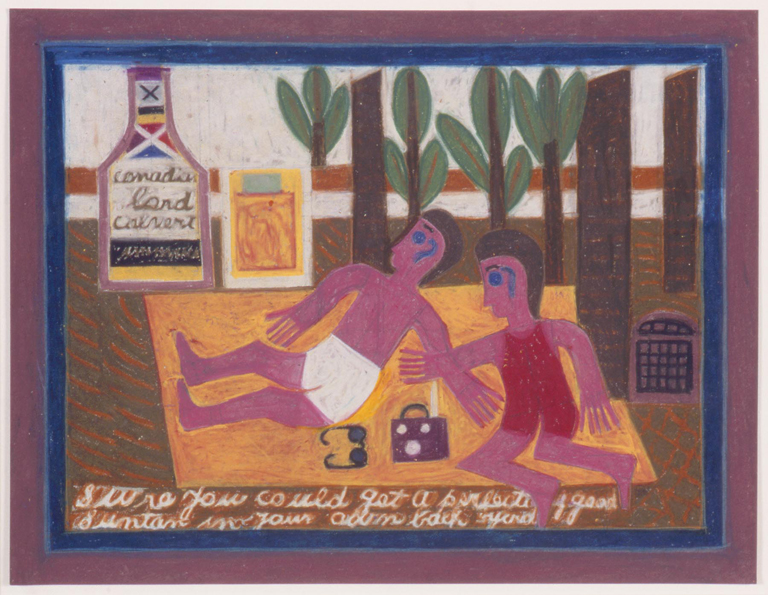
Arning, Eddie. American, 1898-1992
Oil crayon and graphite on paper
19 5/8 x 25 3/4 in.
Gift of Ruth and Robert Vogele
(M2001.142)
Objective: Students will reinterpret an advertisement like self-taught artists in the Accidental Genius exhibition did.
Materials:
- Advertisement (magazine, web)
- Choice materials
Introduce: Many of the artists represented in Accidental Genius used pop culture—magazines, billboard advertisements, comic book characters—as inspiration for or even in their work. Their appropriation of popular culture can help your students think critically about the messages they receive from the world around them.
Ask:
- What is the advertisement selling?
- What is the message behind the advertisement?
Activity:
- Ask students to bring in some kind of advertisement, from a magazine or even a website, to grapple with.
- In small groups, students should work together to parse the meaning of their advertisement.
- Students should then reinterpret the advertisement in a manner similar to how the self-taught artists in the Accidental Genius exhibition did.
- They might choose to make a new advertisement in one of two ways. They can create an advertisement that looks different but has the same meaning, inspired by Eddie Arning; or they can create an entirely new piece that uses imagery or text from the original ad, like Henry Darger.
- Students who feel comfortable with art might take a more visual approach, while those who are more comfortable writing might rewrite the words. Either way, students should show that they understand the original message and that they have pushed it further in some way.
National Standards:
- VA:Cn11.1.6a Analyze how art reflects changing times, traditions, resources, and cultural uses.
- VA:Cr1.1.6a Combine concepts collaboratively to generate innovative ideas for creating art.
Share your artwork with us on social media @milwaukeeart #MAMLearn or email pictures to teachers.mam.org. We’d love to see your creations!
